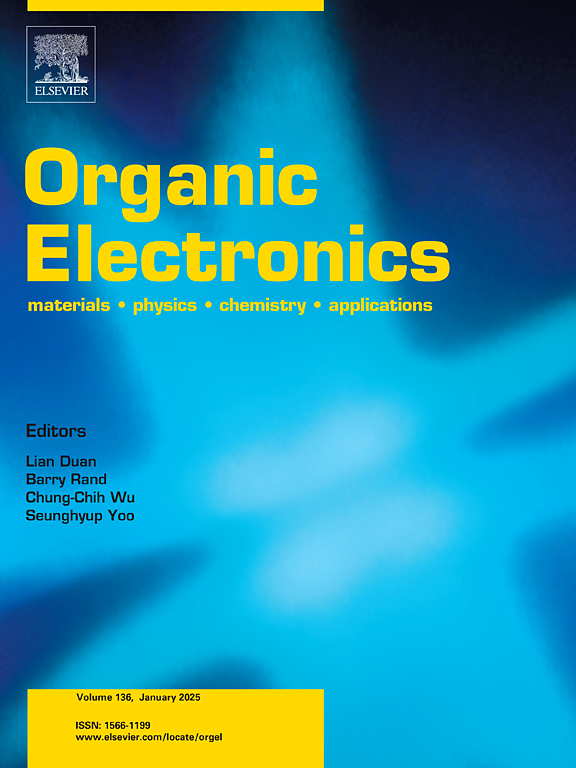Influence of surface groups on SnO2 nanoparticles in enhancing perovskite photodetector performance
IF 2.7
4区 工程技术
Q3 MATERIALS SCIENCE, MULTIDISCIPLINARY
引用次数: 0
Abstract
Tin oxide (SnO2) has been extensively investigated as an electron-conductive material in perovskite solar cells. Over several years, various research efforts have reported different synthesis methods and modification strategies to improve power conversion efficiency (PCE). The PCE of 25.5% has been achieved by coupling Cl-bonded SnO2 with a Cl-containing perovskite precursor. Despite numerous studies on the influence of surface groups on SnO2, few have focused on their role in perovskite photodetectors (PPDs). In this study, we used the SnO2 nanoparticle layer as a modification layer for indium tin oxide (ITO), achieving PPDs with low dark current and high detectivity (up to 1013 Jones). The devices with the SnO2 layer annealed at different temperatures were fabricated for comparison. Characterizations such as scanning electron microscope (SEM), ultraviolet photoelectron spectroscopy (UPS), Fourier transform infrared spectroscopy (FTIR), and X-ray photoelectron spectroscopy (XPS) were performed to elucidate the role of surface groups in modifying the work function and inhibiting of leakage current. The results suggest that chemically absorbed H2O or OH groups on the SnO2 surface play a crucial role in reducing the dark current and affecting perovskite crystallization. Additionally, Sn4+ coupling with OH- or H2O may influence the Fermi level of modified ITO.

表面基团对SnO2纳米颗粒增强钙钛矿光电探测器性能的影响
作为钙钛矿太阳能电池中的导电材料,氧化锡(SnO2)得到了广泛的研究。近年来,各种各样的研究报道了不同的合成方法和修饰策略来提高功率转换效率。通过将含cl的钙钛矿前驱体与cl键合的SnO2偶联,PCE达到25.5%。尽管有许多关于表面基团对SnO2的影响的研究,但很少有人关注它们在钙钛矿光电探测器(PPDs)中的作用。在这项研究中,我们使用SnO2纳米颗粒层作为氧化铟锡(ITO)的修饰层,实现了低暗电流和高探测率(高达1013 Jones)的ppd。制作了经过不同温度退火的SnO2层器件进行比较。通过扫描电镜(SEM)、紫外光电子能谱(UPS)、傅里叶变换红外光谱(FTIR)和x射线光电子能谱(XPS)等表征手段,阐明了表面基团在改变功函数和抑制漏电流中的作用。结果表明,在SnO2表面化学吸附的H2O或OH基团对减小暗电流和影响钙钛矿结晶起着至关重要的作用。此外,Sn4+与OH-或H2O的偶联可能会影响修饰ITO的费米能级。
本文章由计算机程序翻译,如有差异,请以英文原文为准。
求助全文
约1分钟内获得全文
求助全文
来源期刊

Organic Electronics
工程技术-材料科学:综合
CiteScore
6.60
自引率
6.20%
发文量
238
审稿时长
44 days
期刊介绍:
Organic Electronics is a journal whose primary interdisciplinary focus is on materials and phenomena related to organic devices such as light emitting diodes, thin film transistors, photovoltaic cells, sensors, memories, etc.
Papers suitable for publication in this journal cover such topics as photoconductive and electronic properties of organic materials, thin film structures and characterization in the context of organic devices, charge and exciton transport, organic electronic and optoelectronic devices.
 求助内容:
求助内容: 应助结果提醒方式:
应助结果提醒方式:


